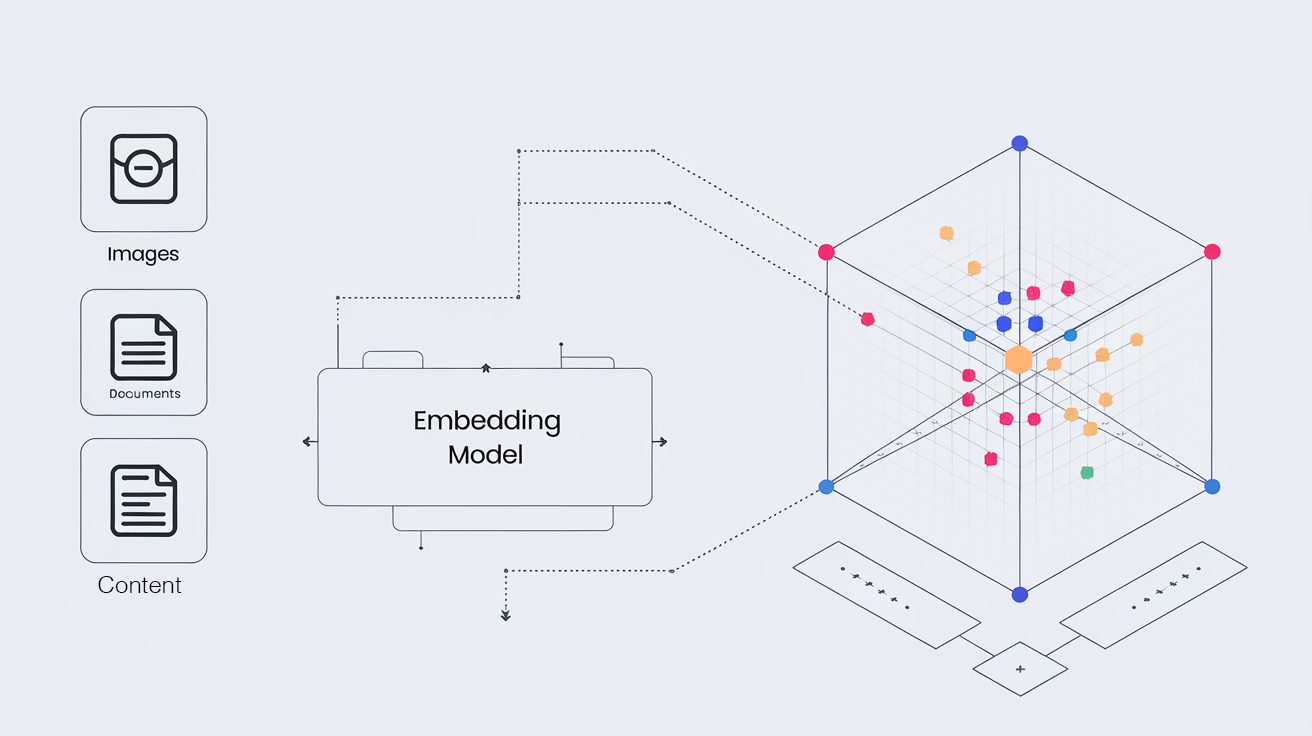· Pierre Marcel · AI · 5 min read
Understanding How AI Embeds Your Drupal CMS Data for Smarter Search
Discover how AI-powered embeddings can revolutionize Drupal search, turning your content into a semantic map for smarter, more intuitive results.

Why AI-Powered Search Matters
In today’s digital age, search functionality is the backbone of a seamless user experience. Whether you’re running an e-commerce platform, a knowledge hub, or a content-rich website, helping users find exactly what they need is crucial. Traditional keyword-based search has long been the standard, but it often falls short, delivering irrelevant results or missing the deeper context of a query.
Enter AI-powered semantic search, where advanced algorithms understand the meaning behind words and queries. At the heart of this revolution lies a fascinating concept: embeddings. In this post, we’ll break down how embeddings work and how they can transform your Drupal CMS website into a search powerhouse.
What Are Embeddings?
Imagine you’re organizing a library, but instead of sorting books alphabetically, you arrange them based on how similar their stories are. Thrillers and mysteries sit together, while romantic comedies and dramas form another cluster. In the digital world, embeddings do the same for your content.
An embedding is a numerical representation of data—text, images, or even video—mapped into a high-dimensional space. Each piece of content is represented as a vector, a list of numbers capturing its essence and meaning. This allows AI to compare pieces of content not just by their words but by their deeper relationships.
Think of it like Spotify creating playlists. Songs that share similar ‘vibes’ are grouped, even if their genres or lyrics differ. Embeddings enable your website’s search to recognize queries in a similar, context-aware manner.
How Does Embedding Work with Drupal?
The magic of embeddings in Drupal involves several key steps:
Content Extraction
Your Drupal site houses structured content—nodes, fields, and entities. Using Drupal’s robust APIs, this content is extracted in a form ready for processing. For example, a blog post’s title, body text, and tags are prepped for AI processing.Content Vectorization
Once the content is ready, it’s fed to an AI model trained to generate embeddings. These embeddings are numerical vectors capturing the semantic meaning of your content. For instance, a blog post about “sustainable travel” is turned into a unique vector based on its themes, not just its keywords.Storage in a Vector Database
Embeddings need to be stored for retrieval. Enter vector databases like Pinecone, Elasticsearch (with vector capabilities), or Weaviate, which organize these embeddings for efficient comparison.Semantic Search
When a user enters a query, it’s also converted into an embedding. The AI then compares this query embedding with the stored content embeddings, surfacing the most relevant results based on meaning, not just keyword matches.
Here’s an example workflow:
- A user searches for “eco-friendly vacations.”
- The query is embedded into a vector.
- The AI compares this vector with your content embeddings and identifies the best matches, even if the words “eco-friendly” or “vacations” aren’t explicitly present in the content.
Benefits of AI-Powered Search
Embedding-based search offers a multitude of benefits:
- Improved User Experience: Users find the most relevant content faster, even with vague or conversational queries.
- Content Discovery: Hidden gems in your content library are surfaced, increasing engagement and value.
- Personalization: Embeddings can also power personalized recommendations by matching user behavior with relevant content.
Implementation Example: Embedding Workflow
Let’s walk through an example:
- A Drupal website hosts an article titled “Top 10 Tips for Sustainable Travel.”
- The content (title, body, tags) is vectorized, creating a unique embedding for the article.
- A user searches for “eco-friendly vacations.”
- Even though the keywords don’t match perfectly, the AI-powered search recognizes the conceptual similarity between “sustainable travel” and “eco-friendly vacations” and delivers the article as a top result.
This approach ensures your users are guided to meaningful results, not stuck sorting through irrelevant matches.
Tools and Integrations
Bringing AI-powered search to your Drupal website requires integrating several tools and technologies seamlessly. Here’s how you can get started:
Drupal Modules:
The AI Module for Drupal offers experimental features for AI-driven search, including AI Search. This feature enables semantic search and integrates with vector databases. With the Search API, you can preprocess and extract content efficiently, readying it for embedding generation.AI Models:
Tools like OpenAI, Hugging Face, or open-source NLP models are commonly used to generate embeddings. These embeddings serve as the foundation for meaningful, context-aware search results.Vector Databases:
Efficient storage and retrieval of embeddings are made possible through vector databases. The Drupal AI module currently supports:
These tools work together to transform Drupal’s traditional search into an advanced semantic search system, providing users with smarter, more accurate results.
Challenges and Considerations
While embedding-based search offers powerful capabilities, there are a few important challenges to keep in mind:
Cost: Generating embeddings for large datasets, integrating AI models, and storing data in vector databases can be resource-intensive. Organizations must budget for computational power, storage, and licensing costs, particularly for high-traffic or content-rich sites.
Scalability: Ensuring fast query response times as your dataset and user base grow requires robust infrastructure. Vector databases must be optimized for high performance to handle real-time searches efficiently.
Security: Managing embeddings and vector databases involves similar considerations as traditional search systems like SOLR. Although vector databases add new capabilities, they don’t inherently change the security landscape. Sensitive or private data still needs to be handled with care, ensuring encryption, access control, and compliance with data protection regulations. Proper safeguards should be applied to prevent unauthorized access, just as you would with a SOLR or SQL database.
By proactively addressing these challenges, you can maximize the benefits of embedding-based search while minimizing risks and ensuring a secure, scalable implementation.
AI-powered search is more than a trend—it’s the future of web navigation. By leveraging embeddings, Drupal CMS websites can transform search from a frustrating chore into an intuitive, user-friendly experience.
Whether you’re running a content-heavy site, an e-commerce platform, or an educational portal, embedding-based search ensures your users find what they need when they need it.
Ready to dive into AI-powered search for your Drupal site? Let’s keep the conversation going—connect with me on social media or reach out directly to share your thoughts and ideas about this exciting technology.
